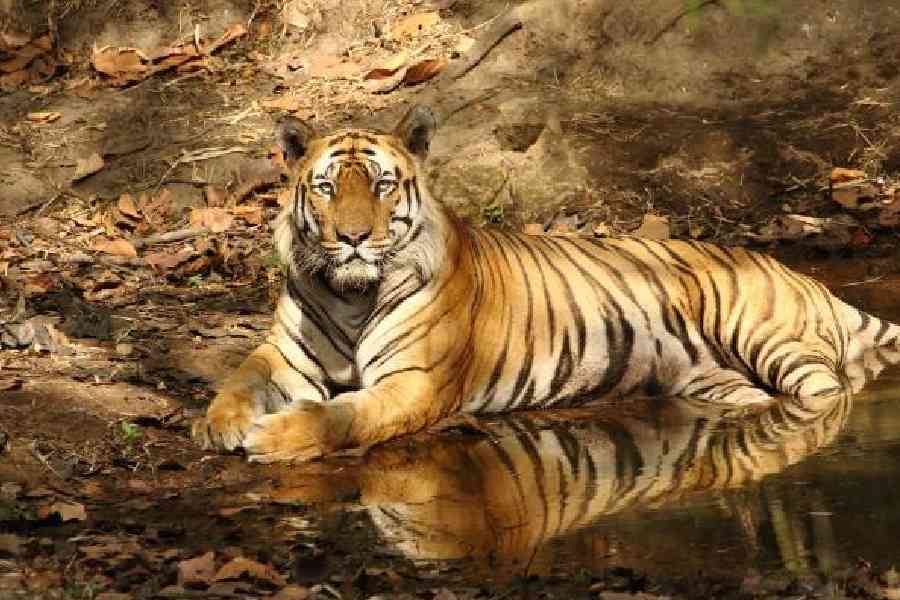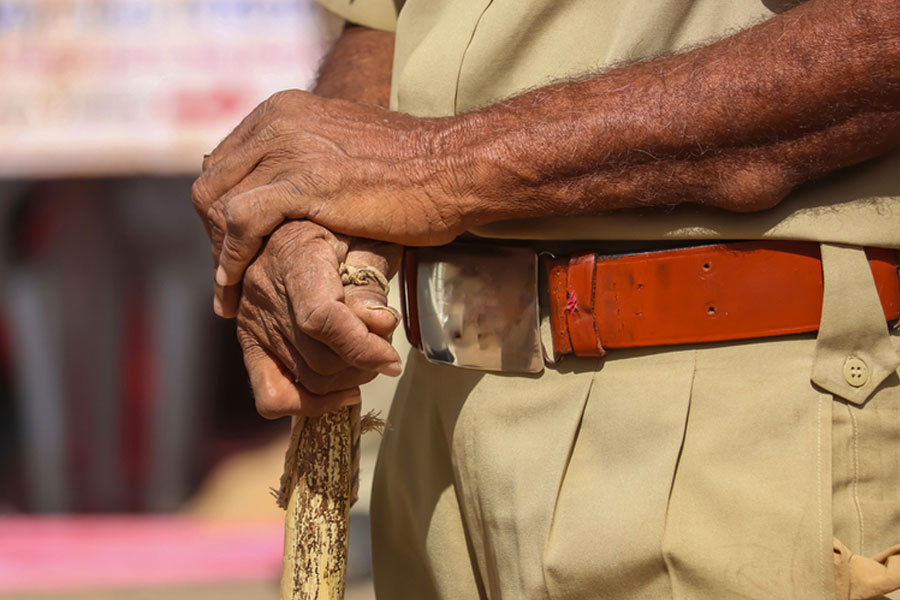Following a tip-off from a pally local source about the higher than normal surge in tiger sightings at Bandhavgarh National Park, I quickly rallied a few photographer friends to head for India’s fabled tiger reserve last year.
Bahdhavgarh, nestled in the tropical dry and moist deciduous forests of Madhya Pradesh, has always held a special charm for both casual nature lovers and diehard wildlife enthusiasts both from India and abroad. Its relatively high frequency of tiger sightings has made it the most favoured haven for the wildlifers.
Several factors have contributed to turn the national park into a fabled tiger paradise. Its mixed habitats and presence of huge grass-filled meadows nourished by several perennial streams have created a robust eco-system supporting large herbivores like chital, sambar, wild boar and barking deer. These herbivores, in turn, provide ample prey for the park’s ever-growing density of tigers and for other denizen predators as well.
The other factor is the relatively small size. At about 1,536sq km including the buffer and core zones, it is smaller than nearby parks like Satpura (2,200sq km) or Kanha National Park (1,945sq km), despite sharing more or less similar topography consisting of valleys, meadows and marshland.
Tyger, Tyger, Burning Bright...
Our first morning safari began with the Pachperi or Panpatha buffer zone of Bahdhavgarh, which forms the outer ring of the forest. The Madhya Pradesh forest department has done an excellent job here by creating this buffer zone to curb human infiltration into the core zones, especially the adjacent Khitauli.
They have involved the local villagers in the conservation of the forest by forming joint forest management committees, which, in turn, have guaranteed a day-to-day vigil of the forest and have granted them restricted access to the buffer zones for collection of firewood for domestic use, although unofficially.
As our Gypsy steered through the meandering roads of Panpatha, leaving behind dry, parched bamboo thickets under the scorching May sun, all of us were highly sceptical of a tiger sighting in a buffer zone as tigers are more often seen in the core zones. But our driver Sunil’s sheer optimism kept our hopes alive.
After about an hour of driving, Sunil stopped the car at the bank of a nice but thin stream flowing steadily through the dense forest. He asked us to maintain absolute silence. By then the mellow morning sun had turned into a searing one, but we waited, ignoring the heat. Then something incredible happened.
With the rustle of thickets and clumps nearby, out emerged the face of a young tigress. After giving us a brief curious look, it slipped into the cool stream and sat insouciant under the shade of the trees. Overawed by the sudden turn of events, we stood transfixed.
That was for a few seconds but our shutters kept clicking to capture the beautiful tigress, poised with her hypnotic grace. Sighting of a tiger at the very first safari made us palpably happy and excited. But Sunil teased us, saying: “Sir, yehtoh sirf trailer thi, film toh abhi baki hai”.
Eventually, our subsequent safaris at Bahdhavgarh over the next few days would indeed reveal Sunil’s ‘baki’ film. That very evening, on the safari we headed to the Tala zone, hoping to catch a glimpse of Bajrang, the dominant and famed male tiger of the zone. We spent two hours waiting in the sweltering heat of the May afternoon at Sita-Mandal, a plateau named after Sita, the legendary tigress of Bahdhavgarh.
Just as our patience was wearing thin, the robust Bajrang finally emerged from a cave beneath us, strolling majestically, presumably after having a sound siesta. The overtly muscular tiger looked upward once, sensing the hullabaloo created by the safari cars. As he sauntered through the rugged terrain, we clicked away, capturing every moment. Anyone who loves nature and its beautiful wild inhabitants must come to Bahdhavgarh just to witness its incredible tigers and the awesome beauty of the animals.
Khitauli Zone And a Grand Finale
The final safari of our trip was at Khitauli zone, one of Bahdhavgarh’s core zones. As the most frequent tiger sightings take place at core zones, our expectations were running high, especially after the sightings we had the day before. About half an hour into the drive, we arrived at the edge of an expansive lush green meadow that locals call Emiliya Waha. Surrounded by dense forest, the verdant meadow was alive with wildlife — a peacock dancing fanning its train of feathers, herds of spotted deer grazing heedlessly.
Hearing alarm calls of chitals from the adjacent forest, we waited a while, but then Sunil suddenly sped off, following what seemed to be a tip-off over his cellphone. We soon came close to a half-dry creek crowded with other hurriedly parked Gypsies. Drawing closer we realised our hunch was correct. Through the clumps of thickets we saw a male tiger lounging on the moist creek bed. It was Chhota Bhim of Khitauli, the gentle giant, lying in an apparent slumberous mood.
His muscular frame glowed under the dappled forest light. It looked coolly at us opening its greenish onyx eyes from time to time. It was a wildlife photographer’s dream set-up for capturing the most beautiful predatory mammal under the sun in an ideal chiaroscuro setting and my shutter kept clicking away.
As we drove away extremely jubilant with the sighting, we did not know that Khitauli had more surprises in store for us. Not far from the creek, on our way back, we found a hefty tigress — locally known as ‘raw female’ — panting heavily on bed of a nullah. Apparently she had just devoured a large chital and was now resting. Encountering such a celebrated tigress of the zone and photographing it, that too by sheer stroke of luck, was the most befitting way to conclude our Bahdhavgarh trip, on which the famed national park of Madhya Pradesh had truly showered its bounty on us beyond our wildest expectations.
But no tale or feature about Bahdhavgarh would be complete, especially for the foodies, without highlighting its unique delicacy of malai on hot gulab jamun — a luscious sweet treat that, once tasted, will leave you craving more... more... and then some more.










